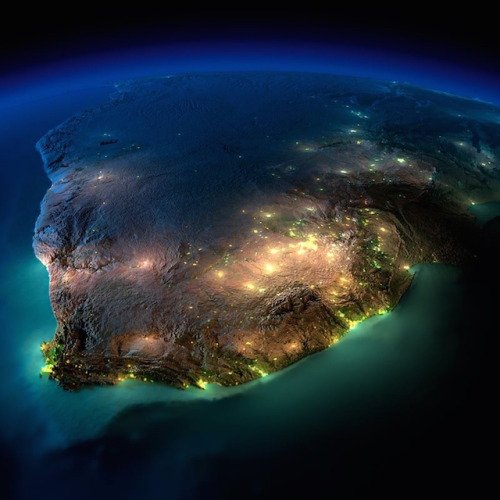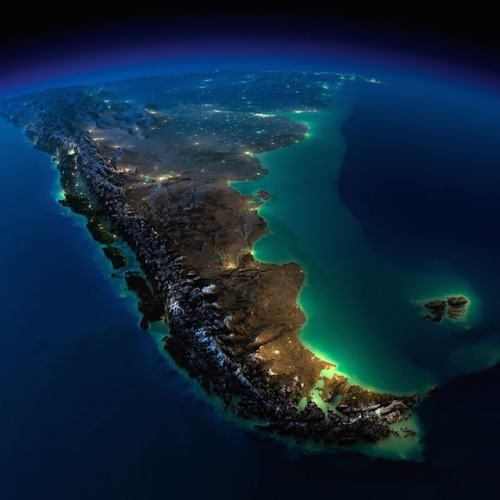Scientists Find Another Sign Suggesting Life Existed On Mars


Scientists find another sign suggesting life existed on Mars
According to new research published in the Journal of Geophysical Research, scientists are getting even more indicators that life once existed on Mars. The latest proof? Carbonates found in 3.8 billion-year-old rock in the Huygens basin.
Follow @the-future-now
More Posts from Maevetheeuropan and Others




Dynamic projection mapping onto deforming non-rigid surface
Truly impressive technology from Ishikawa Watanabe Laboratory, University of Tokyo, can accurately projection map on moving, loose, dynamic surfaces:
We realize dynamic projection mapping onto deforming non-rigid surface based on two original technologies. The first technology is a high-speed projector “DynaFlash” that can project 8-bit images up to 1,000 fps with 3 ms delay. The second technology is a high-speed non-rigid surface tracking at 1,000 fps. Since the projection and sensing are operated at a speed of 1,000 fps, a human cannot perceive any misalignment between the dynamically-deforming target and the projected images. Especially, focusing on new paradigms in the field of user interface and fashion, we have demonstrated dynamic projection mapping onto a deformed sheet of paper and T-shirt. Also we show that projection to multiple targets can be controlled flexibly by using our recognition technique.
More Here
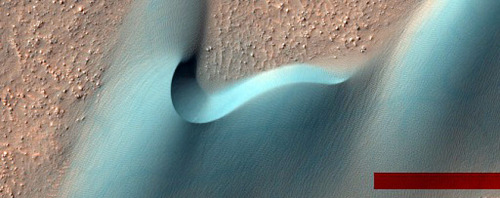
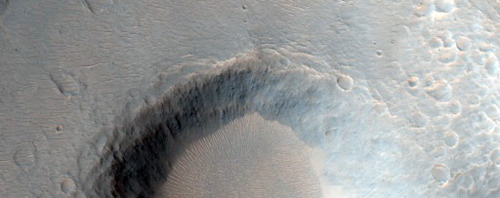
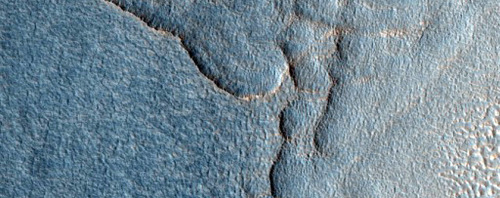
New HiRISE Images
NASA’s HiRISE mission has just released an amazing swathe of new images of the Martian surface.
This mission’s a personal favorite as their images have been detailing Mars in an almost “Google Earth” manner of beauty. From the Martian sky you can see the dunes, craters and other features that litter the landscape, revealing the clues that detail the mysterious story of Mars.
See the images here!
(Image credit: NASA/JPL/University of Arizona)

That’s tonight fyi


POTENTIAL HABITATS FOR EARLY LIFE ON MARS
Recently discovered evidence of carbonates beneath the surface of Mars points to a warmer and wetter environment in that planet’s past. The presence of liquid water could have fostered the emergence of life.
A new study by James Wray at the Georgia Institute of Technology and Janice Bishop of the SETI Institute, as well as other collaborators, has found evidence for widespread buried deposits of iron- and calcium-rich Martian carbonates, which suggests a wetter past for the Red Planet.
“Identification of these ancient carbonates and clays on Mars represents a window into history when the climate on Mars was very different from the cold and dry desert of today,” notes Bishop.
The fate of water on Mars has been energetically debated by scientists because the planet is currently dry and cold, in contrast to the widespread fluvial features that etch much of its surface. Scientists believe that if water did once flow on the surface of Mars, the planet’s bedrock should be full of carbonates and clays, which would be evidence that Mars once hosted habitable environments with liquid water. Researchers have struggled to find physical evidence for carbonate-rich bedrock, which may have formed when carbon dioxide in the planet’s early atmosphere was trapped in ancient surface waters. They have focused their search on Mars’ Huygens basin.
This feature is an ideal site to investigate carbonates because multiple impact craters and troughs have exposed ancient, subsurface materials where carbonates can be detected across a broad region. And according to study led James Wray, “outcrops in the 450-km wide Huygens basin contain both clay minerals and iron- or calcium-rich carbonate-bearing rocks.”
The study has highlighted evidence of carbonate-bearing rocks in multiple sites across Mars, including Lucaya crater, where carbonates and clays 3.8 billion years old were buried by as much as 5 km of lava and caprock.
The researchers, supported by the SETI Institute’s NASA Astrobiology Institute (NAI) team, identified carbonates on the planet using data from the Compact Reconnaissance Imaging Spectrometer for Mars (CRISM), which is on the Mars Reconnaissance Orbiter. This instrument collects the spectral fingerprints of carbonates and other minerals through vibrational transitions of the molecules in their crystal structure that produce infrared emission. The team paired CRISM data with images from the High Resolution Imaging Science Experiment (HiRISE) and Context Camera (CTX) on the orbiter, as well as the Mars Orbiter Laser Altimeter (MOLA) on the Mars Global Surveyor, to gain insights into the geologic features associated with carbonate-bearing rocks.
The extent of the global distribution of martian carbonates is not yet fully resolved and the early climate on the Red Planet is still subject of debate. However, this study is a forward step in understanding the potential habitability of ancient Mars.
Preview of paper: http://onlinelibrary.wiley.com/doi/10.1002/2015JE004972/abstract
TOP IMAGE….Ancient layered clay-bearing bedrock (top left) and carbonate bedrock (bottom right) are exposed in the central uplift of an unnamed crater approximately 42 kilometers in diameter in eastern Hesperia Planum, Mars. The image was taken by the High Resolution Imaging Science Experiment (HiRISE) instrument aboard the Mars Reconnaissance Orbiter. Credit: NASA/JPL/University of Arizona
LOWER IMAGE….Aeolian bed forms overlie ancient layered, ridged carbonate-rich outcrop exposed in the central pit of Lucaya crater, northwest Huygens basin, Mars. The image was taken by the High Resolution Imaging Science Experiment (HiRISE) instrument aboard the Mars Reconnaissance Orbiter. Credit: NASA/JPL/University of Arizona
Fae rogue

I’m a demon arcanist and I’m okay with that.
Solar System: Things to Know This Week
In addition to the Mercury transit of the sun today, there are a few other things you should know about our solar system this week:
1. Mars, Ready for its Close-Up
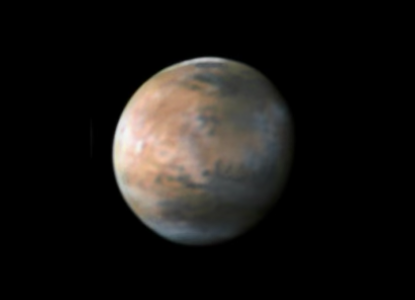
Mars will soon be closer to Earth than it has been for 11 years, presenting a great opportunity for backyard sky watchers.
2. Fire and Ice

Our spacecraft have an even closer view of Mars, and that fact regularly leads to some intriguing discoveries. The latest: volcanoes may have erupted beneath an ice sheet there billions of years ago. The above image is a mineral map of part of the Martian surface.
3. Icy Hydra

Meanwhile, our New Horizons spacecraft has sent home the first compositional data about Pluto’s four small moons. The new data show the surface of Hydra is dominated by nearly pristine water ice–confirming hints that scientists picked up in images showing Hydra’s highly reflective surface.
4. Ceres, Ever Sharper

The mission director for our Dawn mission writes, “Ceres, which only last year was hardly more than a fuzzy blob against the stars, is now a richly detailed world, and our portrait grows more elaborate every day.”
5. Join us at Jupiter

Our Juno mission arrives at the giant planet on Jul. 4. Meanwhile, all amateur astronomers are invited to take part in a worldwide effort to identify potential observations for the spacecraft to make once it’s in orbit. Find out how to join HERE.
Want to learn more? Read our full list of the 10 things to know this week about the solar system HERE.
Make sure to follow us on Tumblr for your regular dose of space: http://nasa.tumblr.com
The Five W’s of an Expandable Habitat in Space
Who: In this case, it’s really a “what.” The Bigelow Expandable Activity Module (BEAM) is an expandable module developed by Bigelow Aerospace using a NASA patent conceptualized in the 1990s. It is made up of layers of fabric that will expand when installed and equalize with the pressure of the International Space Station.

What: Sensors inside BEAM will monitor temperature and radiation changes, as well as its resistance to potential orbital debris impacts. During its time on station, the airlock between BEAM and the rest of the space station will remained closed, and astronauts will enter only to collect data and help the experiment progress. If BEAM is punctured, the habitat is designed to slowly compress to keep the rest of the space station safe.
With the BEAM launch, deployment and time on station, Bigelow will demonstrate a number of expandable habitat capabilities, such as its folding and packing techniques, radiation protection capability and its thermal, structural and mechanical durability.

When: BEAM is set to launch on SpaceX’s eighth Dragon resupply mission April 8, and will be docked to the space station for a minimum two-year demonstration period.
Where: The International Space Station’s mechanical arm will transport BEAM from the spacecraft to a berthing port on the Tranquility module where it will then be expanded.

Why: These expandable modules take up less room on a rocket, but once set up, provide more volume for living and working in space.

When we’re traveling to Mars or beyond, astronauts need habitats that are both durable and easy to transport and to set up. That’s where expandable technology comes in. BEAM is one of the first steps to test expandable structures as a viable alternative to traditional space habitats.
Make sure to follow us on Tumblr for your regular dose of space: http://nasa.tumblr.com

Mega-tsunamis in an ancient ocean on Mars may have shaped the landscape and left deposits that hint at whether the planet was once habitable, researchers say.
The giant waves, thought to have reached up to 120 metres in height as they raced over the land, could have been triggered by two large meteorites slamming into the surface.
The tsunamis may been powerful enough to shape much of the ancient coastlines on Mars, said J. Alexis Palmero Rodriguez, of the Planetary Science Institute in Tucson, Arizona, who led the study.
Writing in the journal Scientific Reports, the international team, which included scientists from the US, China and Germany, describe how they set out to probe a Martian mystery.
It has previously been proposed that the lowlands of the northern hemisphere of Mars were catastrophically flooded around 3.4 billion years ago, forming a vast ocean, potentially covering several million square kilometres. But scientists have been puzzled by the lack of an associated shoreline and its expected features.
Now Rodriguez and his team think they may have the answer- the fact that it is hard to make out such ancient shorelines is because huge tsunamis buried them, depositing sediments up to hundreds of kilometres inland.
Continue Reading.
-
 maellelascaux liked this · 7 years ago
maellelascaux liked this · 7 years ago -
 sterrehstof liked this · 8 years ago
sterrehstof liked this · 8 years ago -
 neverlandical liked this · 8 years ago
neverlandical liked this · 8 years ago -
 koki-koki reblogged this · 8 years ago
koki-koki reblogged this · 8 years ago -
 maevetheeuropan reblogged this · 8 years ago
maevetheeuropan reblogged this · 8 years ago -
 thatyellowpepper reblogged this · 8 years ago
thatyellowpepper reblogged this · 8 years ago -
 thatyellowpepper liked this · 8 years ago
thatyellowpepper liked this · 8 years ago -
 rustedbrandy-blog reblogged this · 8 years ago
rustedbrandy-blog reblogged this · 8 years ago -
 coffeeyed liked this · 8 years ago
coffeeyed liked this · 8 years ago -
 amovingtarget reblogged this · 8 years ago
amovingtarget reblogged this · 8 years ago -
 i-am-done-let-me-rest liked this · 8 years ago
i-am-done-let-me-rest liked this · 8 years ago -
 peanutbuttersmackson liked this · 8 years ago
peanutbuttersmackson liked this · 8 years ago -
 bluefairywitch reblogged this · 8 years ago
bluefairywitch reblogged this · 8 years ago -
 hooking reblogged this · 8 years ago
hooking reblogged this · 8 years ago -
 davidgalvez liked this · 8 years ago
davidgalvez liked this · 8 years ago -
 utot-atbp liked this · 8 years ago
utot-atbp liked this · 8 years ago -
 fuckkeith reblogged this · 8 years ago
fuckkeith reblogged this · 8 years ago -
 fuckkeith liked this · 8 years ago
fuckkeith liked this · 8 years ago -
 oshinytomato reblogged this · 8 years ago
oshinytomato reblogged this · 8 years ago -
 tackycard1a reblogged this · 8 years ago
tackycard1a reblogged this · 8 years ago -
 wibblywobblydetector liked this · 8 years ago
wibblywobblydetector liked this · 8 years ago -
 flarechess liked this · 8 years ago
flarechess liked this · 8 years ago -
 alexanderhamiltonisthebottom liked this · 8 years ago
alexanderhamiltonisthebottom liked this · 8 years ago -
 sniktbub reblogged this · 8 years ago
sniktbub reblogged this · 8 years ago -
 brickprotege reblogged this · 8 years ago
brickprotege reblogged this · 8 years ago -
 thequeerlittletoaster reblogged this · 8 years ago
thequeerlittletoaster reblogged this · 8 years ago -
 llcnsnnts reblogged this · 8 years ago
llcnsnnts reblogged this · 8 years ago -
 smolgaybirb-blog liked this · 8 years ago
smolgaybirb-blog liked this · 8 years ago -
 teach4lyfe reblogged this · 8 years ago
teach4lyfe reblogged this · 8 years ago -
 teach4lyfe liked this · 8 years ago
teach4lyfe liked this · 8 years ago -
 whentheveildisappears reblogged this · 8 years ago
whentheveildisappears reblogged this · 8 years ago -
 deep-ricking liked this · 8 years ago
deep-ricking liked this · 8 years ago -
 elegantpaws reblogged this · 8 years ago
elegantpaws reblogged this · 8 years ago -
 nothintea reblogged this · 8 years ago
nothintea reblogged this · 8 years ago -
 wrongymcwrongerson reblogged this · 8 years ago
wrongymcwrongerson reblogged this · 8 years ago -
 shinys-mind-palace liked this · 8 years ago
shinys-mind-palace liked this · 8 years ago -
 shinys-mind-palace reblogged this · 8 years ago
shinys-mind-palace reblogged this · 8 years ago -
 maevemauvaise reblogged this · 8 years ago
maevemauvaise reblogged this · 8 years ago -
 maevemauvaise liked this · 8 years ago
maevemauvaise liked this · 8 years ago -
 mydearlovesqueerloves reblogged this · 8 years ago
mydearlovesqueerloves reblogged this · 8 years ago -
 theastralclocktowerchimes liked this · 8 years ago
theastralclocktowerchimes liked this · 8 years ago -
 amigo155 reblogged this · 8 years ago
amigo155 reblogged this · 8 years ago -
 amigo155 liked this · 8 years ago
amigo155 liked this · 8 years ago -
 rifter1973 reblogged this · 8 years ago
rifter1973 reblogged this · 8 years ago -
 rifter1973 liked this · 8 years ago
rifter1973 liked this · 8 years ago






